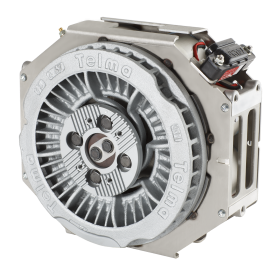Discovery of the currents induced in the variation of the magnetic flux through a metallic mass by Jean Bernard Léon Foucault. The currents that have since carried his name.
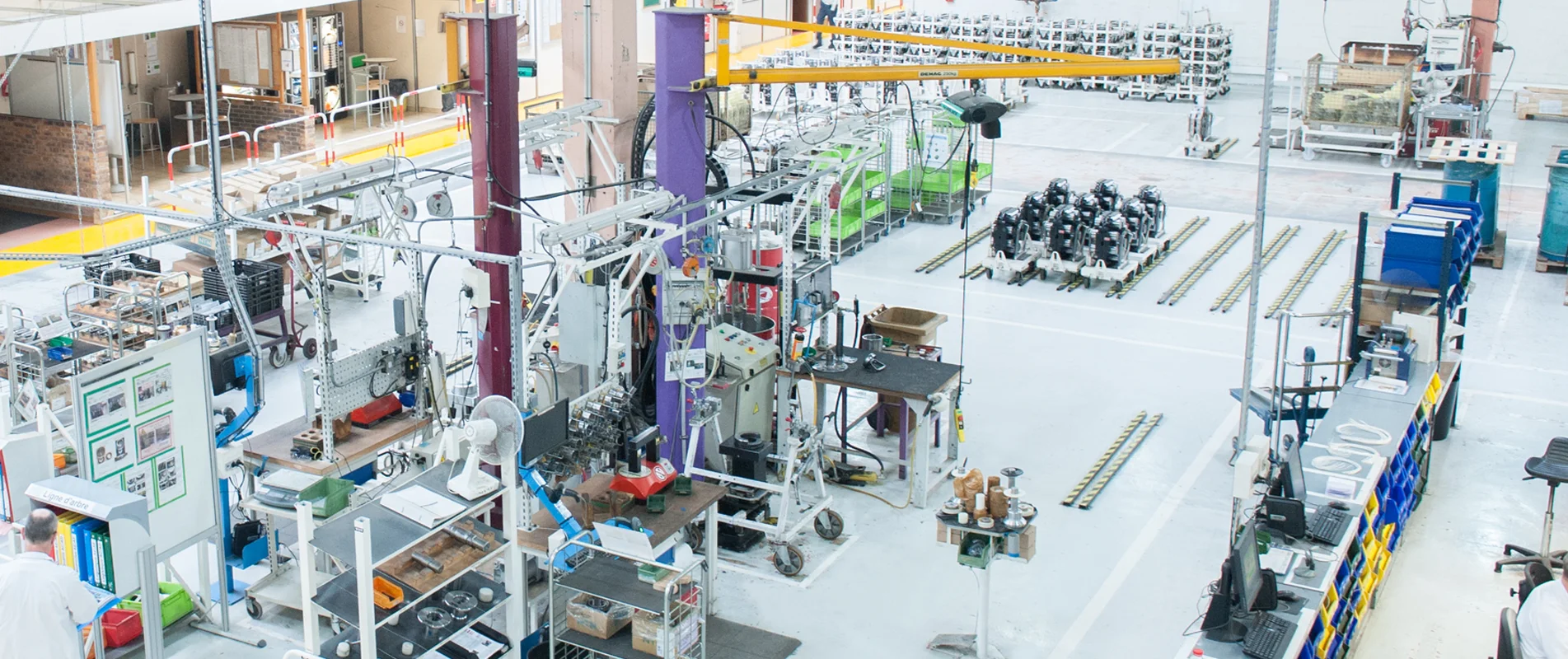
Telma’nın tarihçesi
1851
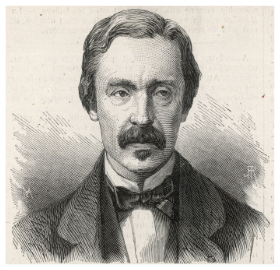
1903
Steckel filed the first retarder patent using Foucault current.
1936
Appearance in France of the first applications of Foucault current on vehicles, built on the principle of a central single induced disk. This device was designed by the French engineer, Raoul Roland Raymond Sarazin.
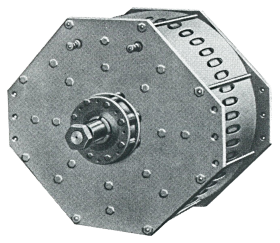
1946
The first retarder is marketed in association with Raoul Sarazin; this is the 450 model which is suitable for vehicles up to 18 tonnes of gross vehicle weight (GVW)
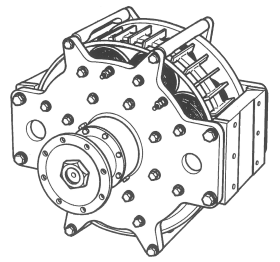
1949
The ELMA "ELectro-Mécanique de l'Aveyron" Company, owned by the French group Labinal, acquired an exclusive licence for Raoul Sarazin’s patent.
ELMA begins a process of continuous improvement of Foucault current retarders; a process which allows it to file patents for improvement, from its launch.
The ELMA company production workshops are on rue Severac, in Rodez, Aveyron, and the head office is at 84 avenue des Champs Elysées in Paris.
1950
The range of retarders is enriched with the 360 and 510 models that allow for the equipping of vehicles of 4 to 32 tonnes of gross vehicle weight (GVW).
In March, the “Sud-Est Industriel et Commercial” magazine published an article entitled “The terrible descent of Laffrey defeated without danger”. This article describes the test throughout the 7 km Laffrey descent with a 8.3 tonne truck equipped with a ELMA retarder and carrying 12 tonnes of coal. The descent of Laffrey then held the record of the French road with the highest slope, with an average of 14% and a stretch at 17%. The article concludes with the exceptional benefits of the ELMA retarder in terms of safety. Indeed, the ELMA allowed a truck to run the 7 km descent in 15 minutes, at a maximum speed of 50 km/h, without any use of friction braking systems.
ELMA, with its parent company Labinal, markets a complete range of testing benches for engines designed for gas stations for vehicles.
1951
The exclusive rights of use by the ELMA Company of Raoul Sarazin’s patent is officially recognized by court decision dated 23rd April.
1952
The head office was transferred to the 7bd Malesherbes in Paris 8eme.
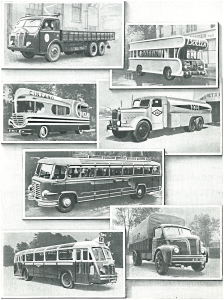
1953
The desire to perfect the electromagnetic retarder led ELMA to focus its research efforts on the improvement of the dissipation of calories generated during the operation of the retarder. In this manner the retarders of the 15000 range induced double disk appeared.
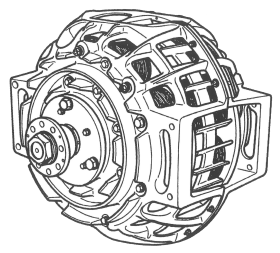
1954
On 29th June, by decision of the Extraordinary General Meeting of shareholders, the Electro Mécanique Company of Aveyron changed its name to TELMA Company. By order of 17th July, the French public authorities required the use of a retarder on all vehicles transporting passengers of more than 8 tonnes of GVW (gross vehicle weight) in areas declared difficult and rugged, the list was detailed by a ministerial circular of 11th June 1957.
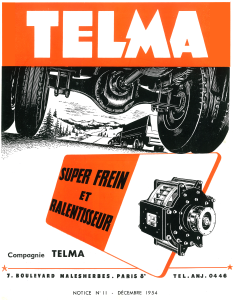
1955
From 12th to 17th of September, the TECHNICAL AUTOMOBILE and CYCLE UNION began trials on the Mont Ventoux with a vehicle equipped with a TELMA retarder.
The TELMA Company, thanks to its continuous commitment to improve the retarder principle, the "Sarazin" central induced disk, created the first TELMA retarder with two outer induced disks, invented and produced by engineer Gilbert Lamarque, among which the inductor system is prepared with two crowns of electromagnets. This revolutionary construction, which would be immediately protected by patents filed both in France and abroad, which since has been widely used by the world of electromagnetic braking.
The TELMA retarders of the C series, based on this concept, were then marketed.
The range of retarders of the Axial type consisted of the following models:
- C40 100kg < 6 tonnes
- C80 145kg < 9 tonnes
- C100 165kg <14 tonnes
- C135 245kg <25 tonnes
- C160 320kg <35 tonnes
- C200 370kg <50 tonnes
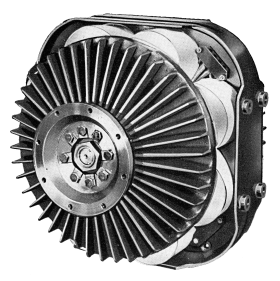
1956
In June, the magazine AUTOMOBIL TECHNISCHE ZEITSCHRIFT (ATZ) published a study made at the request of the Minister of Transport of the Federal Republic of Germany as part of a campaign to increase the safety of road traffic. According to this study, only the TELMA retarder using Foucault currents could be considered as a usable retarder in practice.
The registered office was transferred to 14 rue Daviel, Paris 13eme.
1957
Convinced of the importance of the TELMA retarder in the field of road safety, the French insurance companies granted a reduction in premium for vehicles equipped with a TELMA retarder.
The TELMA retarder would no more count in the GVW (gross vehicle weight) allowed by the French Administration of Mines, which demonstrates the great interest the administration had in using the retarder to increase the safety of heavy loads.
1958
The distribution network, already in place in France, had been widely extended to the majority of European countries.
1959
Roger Gerber’s work "The AUTOMOBILE", referring to that time, mentions only the TELMA retarder as being usable in practice.
Creation of the German subsidiary BFH (Bremsen und Filter Handelsgesellschaft), in Schmiden, near Stuttgart, responsible for distribution and technical assistance for Germany.
Also, at the end of the 1950s, the English subsidiary, TRL (TELMA Retarder Ltd), in London, was created, responsible for distribution and technical assistance for the United Kingdom.
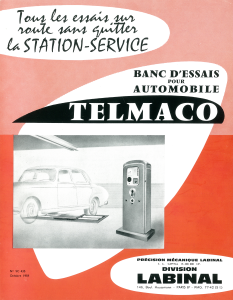
1960
Continuing its research efforts on the improvement of the dissipation of generated calories during the operation of the retarder, TELMA marketed an evolution of its entire range which would now be equipped with rotors with curved fins and ventilation channels, thus improving heat dissipation while decreasing aerodynamic drag.
The TELMA range then consisted of the following models:
- C40 100kg < 6 tonnes
- C80 145kg < 9 tonnes
- C100 165kg <14 tonnes
- C120 205kg <19 tonnes
- C135 245kg <25 tonnes
- C160 320kg <35 tonnes
- C200 370kg <50 tonnes
1961
The TECHNICAL AUTOMOBILE and CYCLE UNION organised a lecture followed by a discussion on retarders. With regard to electrical retarders, only the TELMA retarder was presented.
1962
In January, the Spanish Minister of Industry declared the TELMA retarder for trucks and buses of public utility.
1965
In October, the head office moved to 2 rue Louis Champion, Bezons, in the Paris region.
That year, the activities of the Rodez plant moved to the Vire site in Normandy.

1966
The extraordinary success of the French company TELMA in the area of retarders exported worldwide and built under licence in Spain, prompted a large number of foreign manufacturers to more or less slavishly copy TELMA retarders. These unscrupulous industrialists were not merely content in diffusing their counterfeit retarders in their country of origin, but also in France and abroad.
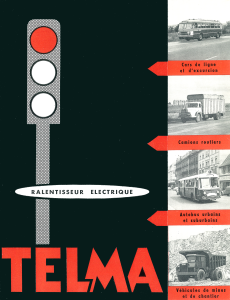
1967
TELMA launches the "Focal ®" retarder, a revolutionary concept intended to equip the gear boxes and axles. TELMA developed the Focal ® retarder, which authorizes mounting on drive shaft vehicles to equip rear engine vehicles for the French manufacturers Saviem and Berliet. This concept quickly attracted the market and especially manufacturers of gearboxes, which validated the mounting of TELMA Focal ® retarders on their products. The first solutions were marketed by ZF Friedrichshafen for its AK/S6-70 ranges, followed by many adaptations on gearboxes for industrial tractors.
The manufacturing of retarders left the factory in Vire for Clichy avenue, in Saint-Ouen, Paris region.
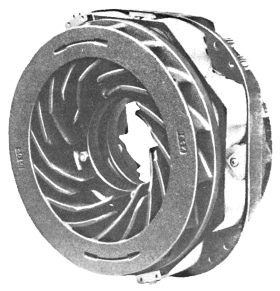
1968
In April, the Spanish subsidiary, MATELI S.A. was created, intended to meet the needs of the Iberian Peninsula with a factory on the outskirts of Pamplona and a distribution and technical assistance centre based in Madrid.
The CA range was also introduced in 1968.
Victim of its growing success, TELMA was forced to protect the interests of the market of electromagnetic retarders, to engage in the fight against the marketing of counterfeit retarders.
Thus, the following judicial decisions were taken:
On 2nd April 1968, the Spanish company KLAM was condemned by the Court of First Instance of PARIS for slavish copying of the Compagnie Française TELMA.
3rd December 1971, the Spanish company SUPERFRENOS ELÉCTRICOS was condemned by the Commercial Court of AVIGNON for unfair competition against the Compagnie Française TELMA.
On 13th January 1972, by judgment of the PARIS Court of Appeal affirming a judgment of the Court of First Instance of PARIS dated 4th February 1971, the Spanish company SUPERFRENOS ELÉCTRICOS was sentenced for unfair competition and an attack on the literary and artistic property of the Compagnie Française TELMA.
On 3rd July 1972, by judgment of the Court of Appeal of PARIS, affirming a judgment of the Court of First Instance of PARIS dated 14th May 1971, the Spanish company SUPERFRENOS ELÉCTRICOS was ordered to pay damages to the Compagnie Française TELMA and the French Patent No. 1,582,167 filed by SUPERFRENOS ELÉCTRICOS was cancelled.
1st December 1972, by judgment of the PARIS Court of Appeal affirming the judgment of the Court of First Instance of PARIS on 16th October 1971, the Spanish company FRENOS IRUÑA was again sentenced for unfair procedures against the Compagnie Française TELMA and the French Patent No. 1,434,246 filed by FRENOS IRUÑA was cancelled.
On 31st March 1973, by judgment of the PARIS Court of Appeal affirming a judgment of the Court of First Instance of PARIS dated 9th February 1972, the Spanish company FRENOS IRUÑA was condemned for infringement of four patents and French certificates of addition operated by the Compagnie Française TELMA.
On 9th April 1974, the Spanish company FRENOS IRUÑA was condemned by the Court of First Instance of PARIS for infringement of five French patents operated by the Compagnie Française TELMA.
On 25th June 1974, the Spanish company ONECA S.A. was condemned by the Court of First Instance of PARIS for counterfeiting and unfair competition against the Compagnie Française TELMA.
1969
The first Focal model mounted in series was the Focal 115 requested by the manufacturer SAVIEM to equip its E7 rear-engine coach.
In the market of the axle-retarder, EUROTELMA was appointed to equip trailers and semi-trailers in cooperation with the company EUROPE TRANSMISSION.
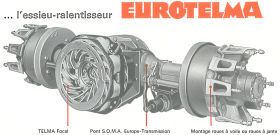
1970
The registered office moved to 89 Avenue du 18 Juin 1940, in Rueil-Malmaison, near Paris.
The Focal retarder, offering an indispensable solution for rear engine coaches, made a remarkable breakthrough on the German OEM market.
TELMA marketed, on the J7 utility of the Peugeot brand, its first hydraulic retarder. The Telmatic was a water turbine that used coolant from the vehicle. Located inline with the crankshaft, it was a primary retarder which strengthened the engine brake; it delivered a nominal 150 NM, overdrive by the engaged gearbox ratio.
That same year, the BOSCH company decided to abandon its electromagnetic flange retarder project because of the refusal of TELMA to grant them the necessary licenses.
1972
TELMA introduced the CC250 model, first retarder from a long line of the CC range, and also pursued the commercialisation of the CA range, which included 4 devices:
- CA100 148kg 100m.daN
- CA135 206kg 145m.daN
- CA160 323kg 160m.daN
-
CA200 323kg 200m.daN
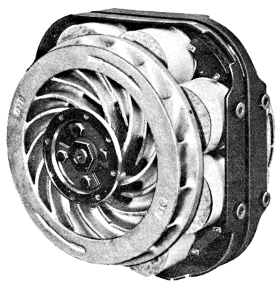
1975
TELMA sold more than 1000 Telmatic hydraulic retarders.
1976
In December, the head office and production plant were grouped on the current site of Saint-Ouen L’Aumône in the Paris region.
The retarder range consisted of the following models:
Axial type
CA series
- CA65 132kg 65mkg 5 to 8 tonnes
- CA100 148kg 100mkg 8 to 13 tonnes
- CA135 206kg 145mkg 13 to 19 tonnes
- CA160 323kg 160mkg 19 to 26 tonnes
- CA200 323kg 200mkg 26 to 35 tonnes
CC series
- CC135/160 230kg 135/160mkg 13 to 26 tonnes
- CC170/200 300kg 170/200mkg 26 to 35 tonnes
- CC220/250 330kg 220/250mkg 35 to 50 tonnes
Focal type
- Focal 65 89kg 65mkg 5 to 8 tonnes
- Focal 115 125kg 115mkg 8 to 13 tonnes
- Focal 130 130kg 130mkg 11 to 15 tonnes
- Focal 155 165kg 155mkg 15 to 26 tonnes
- Focal 170 171kg 170mkg 26 to 35 tonnes
- Focal 205 230kg 205mkg 35 to 38 tonnes
- Focal 250 265kg 250mkg 38 to 50 tonnes
1978
Launch of the CC65, CC80 and CC300.
1979
During the construction of the Nice airport, partly from the sea, 80 BERLIET 6x4 trucks equipped with the TELMA CA200 retarder, took turns in carrying backfill to this very large construction site.
The Axial range was expanded with the introduction of the following retarder:
- CE30 63kg 350 Nm 3,5 to 5 tonnes
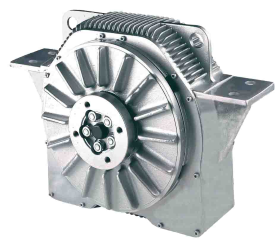
1983
TELMA continued the integration process of its Focal type retarders, which the new F300 model, in partnership with the major stakeholders in the market of gearboxes. A few examples: ZF “Ecosplit”, RENAULT V.I. “B9/B18”, EATON “Fuller”, SCANIA “GR870T”, MERCEDES-BENZ ”G4”.
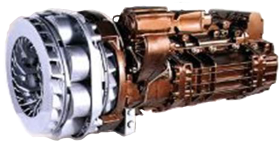
1984
Creation of a commercial antenna in Tokyo, Japan, for the far East market.
Launch of the model: CC100.
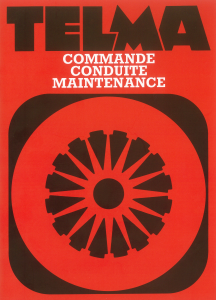
1985
TELMA introduced a major innovation that allowed, by optimizing the generation of Foucault current, an improvement of the torque by 10%, without having impact on power consumption or the weight of the retarder. This TELMA innovation was called RIC technology (Reaction of Compensated Reaction).
Creation of the American subsidiary TELMA Retarder Inc., which settled at first in Cleveland, Ohio for six months and was then settled in Hayward (California). The latter was responsible for distribution and technical support in North America.
1987
Launch of Focal 2000 and Focal 2200, which integrated the RIC technology and a new generation of rotors, then the following electronic systems:
ABS Interface 1st generation, reference JC240100, incorporating the following features:
- manual control of the retarder
- the foot control of the retarder
- simplified low speed cut-off
- ABS interface function
- EMC (Electro magnetic compatibility) immunity
Universal Low Speed Cut-Off, references JC252100/JC251100/..., incorporating the following features:
- hand and foot controls
- low speed cut-off with the tachograph or a mini-generatrice signal
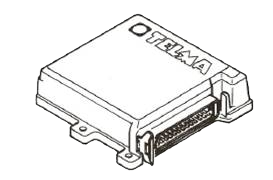
1988
Launch of the Focal 3000 and 3300 which integrated the RIC technology and a new generation of rotors.
TELMA launched a communication campaign illustrated by the famous French "humanist” Designer PIEM.
Then the marketing of the following electronic systems:
ABS Interface 2nd generation, references JC242100/JC241100/..., incorporating the following features:
- manual control of the retarder
- the foot control of the retarder
- low speed cut-off
- ABS interface function (regulation and alarm)
- enhanced EMC immunity
Exhaust brake interface, reference JC322100: module enabling the control of the exhaust brake, in function with the engine brake and the link to the TELMA retarder.
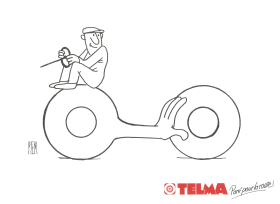
1989
Creation of the subsidiary TELMA Retarder Italia in Milan.
Launch of the CC50.
1990
TELMA logo adopted the colour "blue" from the Labinal group.

1992
In June, TELMA presented the Retarder concept called "M” and launched the model M3300.
1993
TELMA launched the M Axial type family which introduced a standardisation of the stators with the Focal family,
- M200 283kg 2000 Nm
- M271 338kg 2700 Nm
- M301 340kg 3000 Nm
- M3000 350kg 3000 Nm
- M3300 368kg 3300 Nm
and at the same time to complete its Axial range by adding:
- CE35 66kg 350 Nm
-
CC125 172kg 1250 Nm
1995
TELMA marketed the Focal FN50-85 retarder which had equivalent performance, a 25% size reduction compared to the FV60-90 model.
Placing on the market of the ERC (Electronic Retarder Control), wired calculator (without CAN) under references JC332100/..., integrating the following functions:
- manual control of the retarder
- the foot control of the retarder
- low speed cut-off
- ABS interface function (regulation and alarm)
- monitoring of battery voltage
- engine protection
- CTR function (thermal control of rotors)
- independent speed control
- possibility of coupling to the speed control of the motor control
- PC configuration
- On Board diagnosis by dashboard light
- Off Board by PC diagnosis
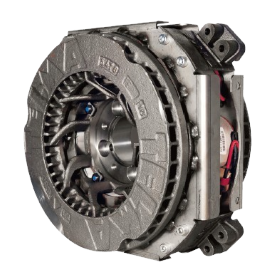
1996
Evolution of the logo and name change to TELMA SA on 15th November.
Presentation of the Hydral concept at the IAA in Germany: first water cooled electromagnetic retarder, producing the electrical power it consumes.
Creation of the Mexican subsidiary, TELMA RETARDER DO MÉXICO, for the marketing of retarders in the Mexican market.
TELMA marketed in Brazil, the first Focal retarders of the FL range, studied specially to equip rear engine coaches. They presented a solution that is shorter than the standard Focal range, by the absence of additional antifriction bearing.

1997
Marketing of new electronic devices such as:
RS24 Hydral Calculator, multiplex calculator (with CAN), with the reference JC382102 and integrated the following functions:
- 1st generation multiplex calculator for Hydral retarders
- manual control of the retarder
- the foot control of the retarder
- low speed cut-off
- ABS interface function (regulation and alarm)
- monitoring of battery voltage
- engine protection
- coupling to the speed control of the motor control
- speed control
- monitoring of stator temperatures and retarder rotor
- On Board diagnostic
- Off Board diagnostic
Hydral Interface, electronic power steering of the Hydral retarder, with the reference JC362100 and integrated the following functions:
- linear control
- reading and monitoring of the current in the coils
- diagnostics
- electronic integration on the retarder
1998
Launch of new electronic systems:
Speedomatic, calculator used in wired version (base hardware MCR 24V), with the reference JC372100 and integrated the following functions:
- manual control of the retarder
- the foot control of the retarder
- low speed cut-off
- ABS interface function (regulation and alarm)
- monitoring of battery voltage
- engine protection option
- speed control
- management of the TELMA light
MCR retarder calculator, multiplex calculator (CAN), with the references JC37xxxx/MC00xxxx and integrated the following functions:
- manual control of the retarder
- the foot control of the retarder
- low speed cut-off
- ABS interface function (regulation and alarm)
- monitoring of battery voltage
- engine protection
- coupling to the speed control of the motor control
- thermal control of the retarder option
- speed control
- On Board diagnostic
- Off Board diagnostic (KWP2000 / UDS)
- EOL option (configuration)
The MCR references JC372100/200/303/302/305/306/307 and 310 were developed and mounted on trucks from RENAULT Commercial Vehicles.
In 1998 Telma decided to give new names to its family of retarders.
New name of the Axial range:
- AE30-32
- AE30-35
- AC50-55
- AC50-65
- AC51-00
- AC61-25
- AC61-35
- AC61-60
- AC72-00
- AC82-45
- AC82-70
- AC83-00
- AC83-31
- AM82-01
- AM82-71
- AM83-01
- AM83-00
- AM83-30
- AD50-50
- AD50-60
- AD50-90
- AD71-30
- AD71-55
- AD72-00
New name of the Focal range:
- FS70-65
- FN50-85
- FV60-90
- FV61-00
- FV61-30
- FV61-40
- FV71-50
- FV71-70
- FV71-90
- FV61-31
- FN72-00
- FN72-20
- FN72-40
- FL71-70
- FL72-20
- FL72-40
- FP82-00
- FV82-70
- FV82-60
- FV83-00
- FN82-70
- FN83-00
- FN83-30
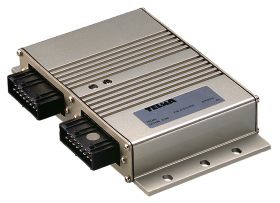
1999
Road tests on MERCEDES-BENZ trucks, first Hydral retarders adapted for use in series.
That year, TELMA launched a new AD range with the following two models:
- AD50-55 124kg 550 Nm
- AD50-90 125kg 900 Nm
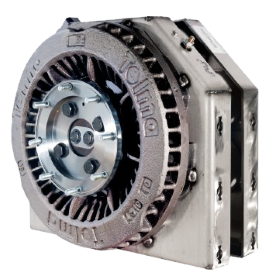
2001
Integration in the VALEO group, Electrical Systems branch.
The MCR reference JC372315 was developed and mounted on EvoBus vehicles ( for the brands: MERCEDES-BENZ and Setra). The MCR reference JC372311 was developed and mounted on RENAULT VI trucks.
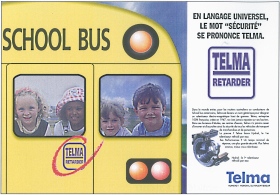
2002
TELMA continued marketing the AD range by enriching it with the following models:
- AD61-30 190kg 1300 Nm
- AD61-55 197kg 1600 Nm
- AD72-00 230kg 2000 Nm
2004
TELMA marketed the FN82-40, especially studied at the request of IRISBUS. The FN82-40 presented a mass less than 30kg FN72-40 for the same torque.
That same year, TELMA completed its AD range by adding the following model:
- AD72-60 255kg 2000 Nm
2005
New plant in the Shanghai area which aimed at supplying the Chinese market.
The Chinese plant manufactures, under the company license of TELMA SA, part of the Focal range adapted to the needs of the Chinese market.
2006
The MCR reference JC372319 is developed and mounted on RENAULT Trucks, references MC002016/033 on IRISBUS buses, the reference MC001020 for IVECO Daily minibuses.
2009
The MCR reference MC002019 is developed and mounted on VDL buses, while the MC001024 reference was created for IVECO minibuses.
2010
In September, all of the companies forming the TELMA Group were repurchased from the Valeo Group, by Torque Industry.
On the occasion of this change, the TELMA brand adopted a new logo.

2011
TELMA launches the FM range. This latest generation of Focal type retarders, fruit of the indisputable TELMA experience in the field, introduced many improvements. The size 6, first to form this new family, was specially developed for the Chinese market.
2012
TELMA launches the AF range. This new generation of retarders, of the axial type, concentrated all the latest technical innovations of Telma, resulting from TELMA’s undisputed expertise in the field of retarders. Sizes 3 and 5 were the first to form this new family. Size 2, meanwhile, came in December.
